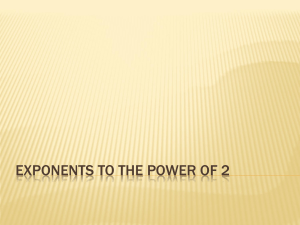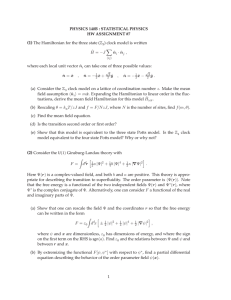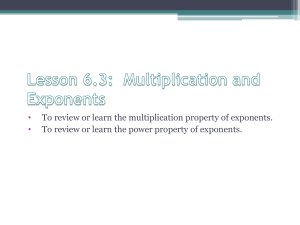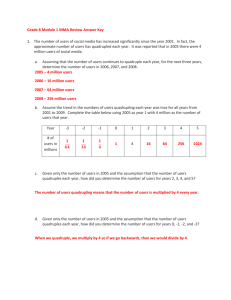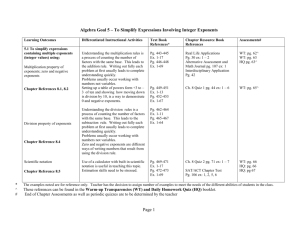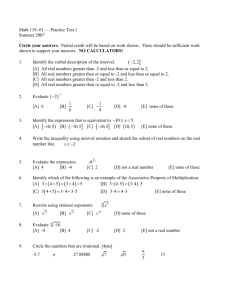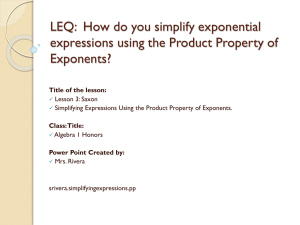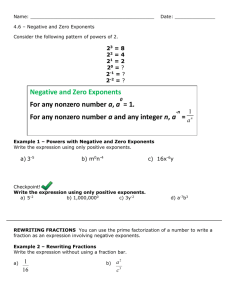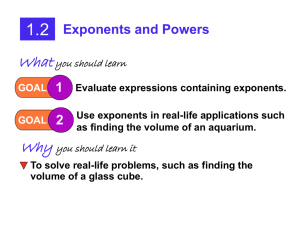ex1
advertisement
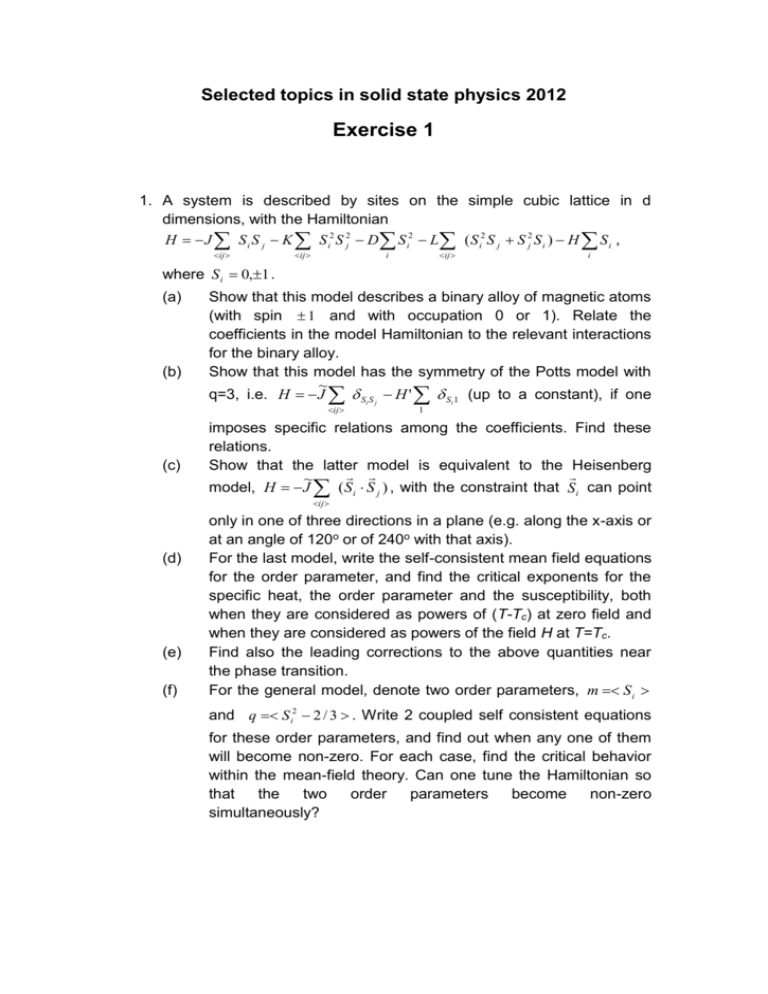
Selected topics in solid state physics 2012 Exercise 1 1. A system is described by sites on the simple cubic lattice in d dimensions, with the Hamiltonian H J S i S j K S i2 S 2j D S i2 L ( S i2 S j S 2j S i ) H S i , ij ij ij i i where S i 0,1 . (a) (b) Show that this model describes a binary alloy of magnetic atoms (with spin 1 and with occupation 0 or 1). Relate the coefficients in the model Hamiltonian to the relevant interactions for the binary alloy. Show that this model has the symmetry of the Potts model with ~ q=3, i.e. H J Si S j H ' Si 1 (up to a constant), if one ij (c) 1 imposes specific relations among the coefficients. Find these relations. Show that the latter model is equivalent to the Heisenberg ~ model, H J (S i S j ) , with the constraint that S i can point ij (d) (e) (f) only in one of three directions in a plane (e.g. along the x-axis or at an angle of 120o or of 240o with that axis). For the last model, write the self-consistent mean field equations for the order parameter, and find the critical exponents for the specific heat, the order parameter and the susceptibility, both when they are considered as powers of (T-Tc) at zero field and when they are considered as powers of the field H at T=Tc. Find also the leading corrections to the above quantities near the phase transition. For the general model, denote two order parameters, m S i and q S i2 2 / 3 . Write 2 coupled self consistent equations for these order parameters, and find out when any one of them will become non-zero. For each case, find the critical behavior within the mean-field theory. Can one tune the Hamiltonian so that the two order parameters become non-zero simultaneously? 2. The free energy within the Landau theory for a Heisenberg ferromagnet has the form 1 F a(T Tc ) | M | 2 B | M | 4 C | M |6 H M . 2 (a) For C=0, find the susceptibilities above and below the transition, and discuss their critical behavior. Below the transition, distinguish between the longitudinal and transverse susceptibilities. (b) For the same case, find the equation of state and show that it obeys The scaling relation M (t , H ) b u M (b x t , b y H ) . Find the exponents x, y and u, and relate them to the exponents , , , . (c) Repeat the above for the case B=0 and C>0. Specifically, find all the critical exponents. (d) For B<0 and C>0, show that one has a first order transition. Express the temperature of this transition in terms of the parameters a, B and C. Find also the discontinuity in the order parameter at this transition in terms of these variables. (e) Write down the Ginzburg-Landau theory for the above model, and find the exponent for the correlation length for cases (a) and (c). In the latter case, construct the Ginzburg criterion, and find the upper critical dimension.

